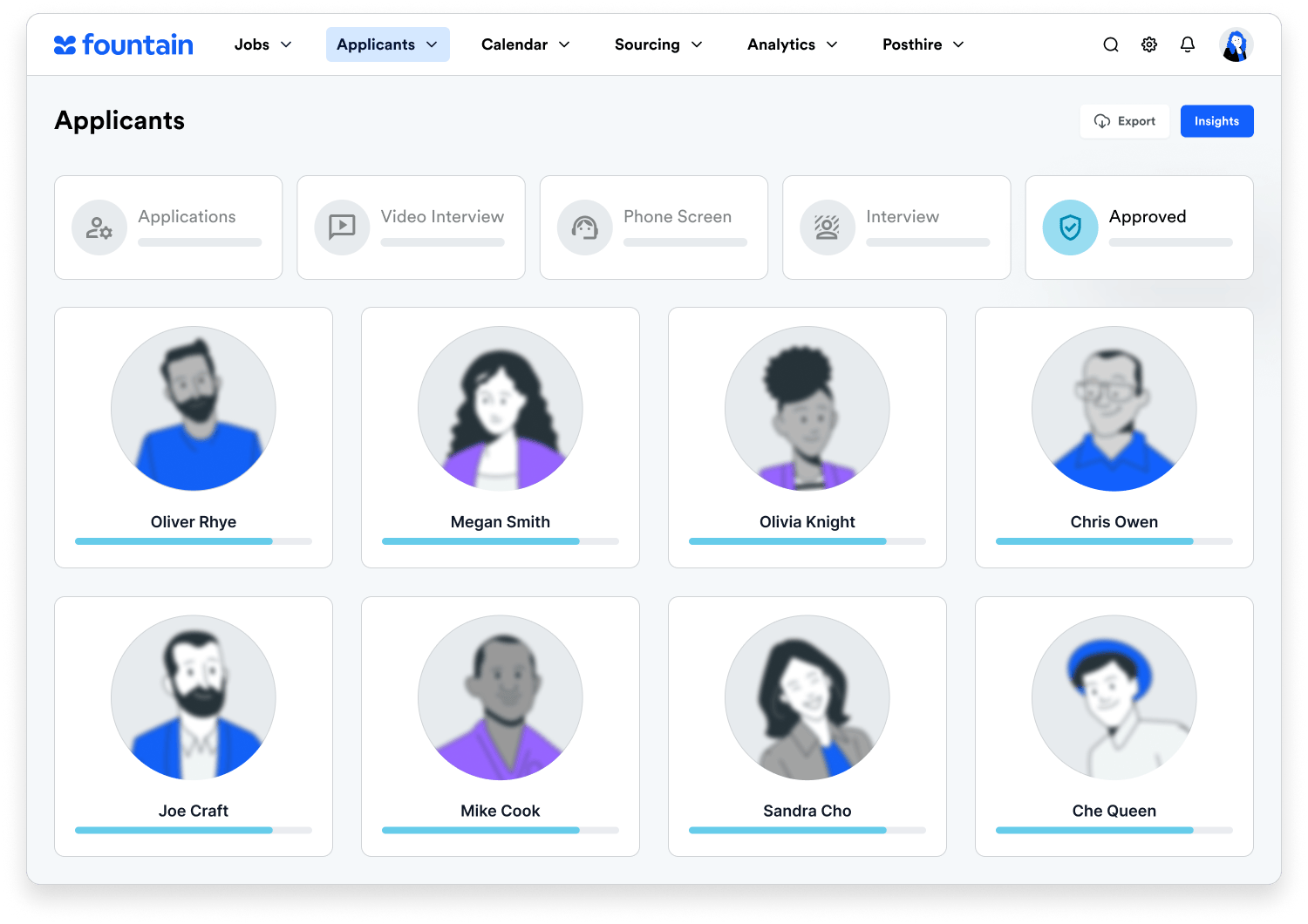Did you know? Every day, 2.7 billion people around the world and 82% of U.S. workers clock in to start their jobs as frontline workers. And according to the March 2024 jobs report from the U.S. Bureau of Labor Statistics, the number of part-time roles has substantially increased by 691,000.
The team at Fountain is thrilled to share that our new e-book, Frontline Voices: Understanding the Human Experience of Hourly Work, is available now and offers insights into the unique challenges facing today’s frontline workers and their employers, as well as solutions.
In this post, we’ll offer a sneak peek of what you can find in our report. Let’s dive in!
Frontline challenges are growing. We have solutions.
As the number of frontline workers grows, so do the number of challenges they face. And, as many employees and employers alike can attest, frontline workers face specific issues that don’t always apply to corporate workers.
For example: Dated recruitment processes that require paper applications, slow employer response times, and manual movement through the funnel on the part of recruiters are major blockers to timely and efficient hiring.
Frontline Voice tackles these issues head-on and offers human-first, technology-driven solutions for the most pressing of these problems, including how to improve the candidate experience.
What frontline job candidates want
Competition for frontline talent is fierce and ease of process is often a determining factor in whether top, qualified candidates pursue an opportunity. From the moment job seekers learn about potential roles, through their offer acceptance, and even beyond their first day at work, applicants want a smooth journey.

The path to employment must be fast, straightforward, and easy for applicants to request assistance if and when needed. However, the ability to offer quick but compassionate communication is a real stumbling block for many employers. Although 65% of frontline leaders feel their communication with their employees is adequate, only 35% of frontline workers agree.
In Frontline Voices we outline several concrete ways to bridge the gap between employee expectations and reality, including:
- Infusing Automation: Early communications, interview scheduling, and document signing can be largely automated. This allows candidates to self-pace through the hiring funnel. Plus, recruiters can devote their time and energy to more meaningful human-centric interactions, leading to higher quality relationships between recruiter and employee.
Case in point: When high volume staffing agency BELAY automated candidate communication using Fountain Hire, they saved more than 1,000 hours of recruiter time. That’s nearly six weeks of productivity handed back to teams and individuals.
In short, targeted use of automation is a win-win for everyone across the board.
Read more about BELAY’s hiring successes with Fountain Hire.
- Consistent Communication: A hiring system with built-in messaging functionality enables recruiting and onboarding teams to trigger automatic communication and inform candidates of next steps or remind them of interview appointments.
Balancing the infusion of automation with a human touch is critical to improving hiring outcomes and reducing time-to-hire. A sense of connection to an individual or team keeps candidates’ attention and guides them across the finish line.
- Clear Opportunities for Advancement: A McKinsey survey of more than 2,100 frontline employees found that more than 70% have applied to career advancement opportunities either with their current employers or with different companies.
Additionally, we’ve found that frontline workers almost unanimously want clear job descriptions that include language around advancement opportunities. Frontline workers want to understand immediately how they can grow with your company.

Regular mentions of these advancement opportunities before, during, and after they’re hired remind job seekers that you value their career growth and see them as more than just a number in a pool of applicants.
Speed and simplicity win talent
Underpinning all of these desires is the fact that many frontline workers do not want to wait weeks for that first paycheck. Employers need to ditch the manual processes and lean into technology to automate as many steps as possible, giving them a leg up in the hiring game.
When candidates have a seamless path to a job offer and are onboarded swiftly, they see this as a sign of care and are more likely to show that same level of effort and attention through their work performance.
It just makes sense: If candidates feel stuck, lost, ignored, or undervalued from the start, they’re likely to drop out of the application altogether. When they have personalized assistance and guidance, they feel supported and cared about as a valued member of their prospective team.
These problems and their solutions are truly just the tip of the iceberg. Frontline work is an ever-evolving, highly specific, and rapidly growing employment sector. And the needs of workers are changing, too. Frontline Voices outlines the importance of mobile hiring processes, upskilling, and many more topics crucial to anyone involved in frontline hiring today.
Want more insights from Frontline Voices? Click here to download your copy today.

